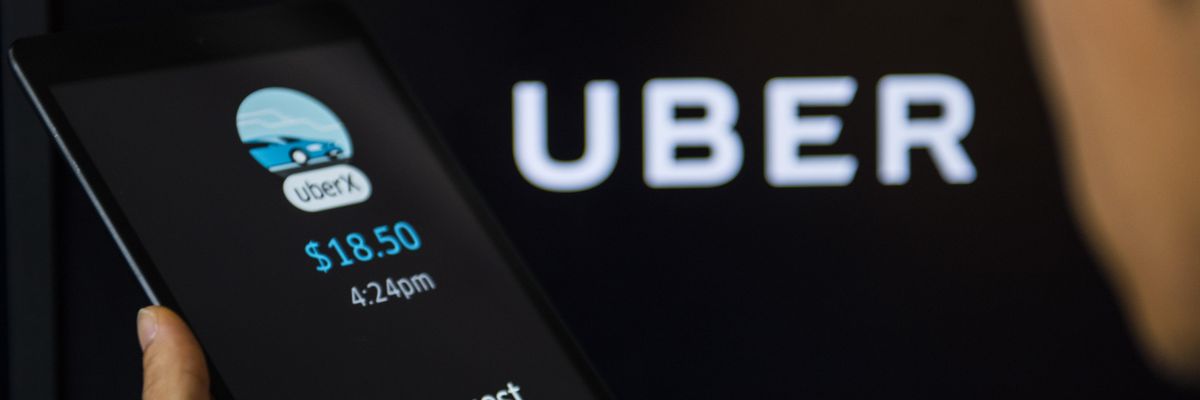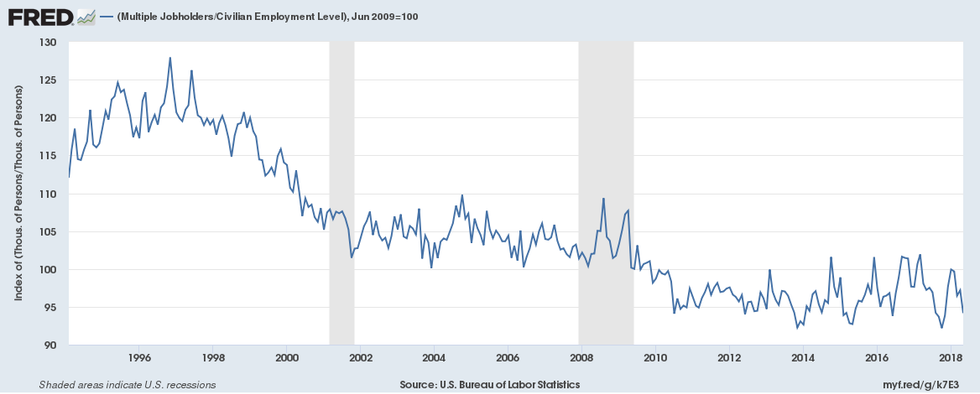
"While that didn't surprise those of us who follow the data closely, the release did seem to catch some of the proselytizers of the gig economy by surprise." (Photo by studioEAST/Getty Images)
Killing the Myth of the Gig Economy
It seems the gig economy means much more to pundits than to workers.
Many pundit types were thrown for a loop by the Labor Department's release of its Contingent Worker Survey yesterday. The survey, the first one since 2005, showed no increase in the percentage of workers employed as independent contractors, such as those who work for Uber and Lyft.
While that didn't surprise those of us who follow the data closely, the release did seem to catch some of the proselytizers of the gig economy by surprise. It turns out that replacing taxi drivers (many of whom are contract workers) by contract workers for Uber and Lyft, has not transformed the labor market.
As has been pointed by out by Larry Mishel and others, most of the people doing gig economy work do it as a sidebar, in addition to their main jobs. But it is worth noting that even here the data points to a decline in the percentage of workers employed in multiple jobs over the last quarter century.
So even insofar as workers are turning to Uber or TaskRabbit to supplement their income, it seems to a large extent it is substituting for other side work they used to do. It seems the gig economy means much more to pundits than to workers.
An Urgent Message From Our Co-Founder
Dear Common Dreams reader, The U.S. is on a fast track to authoritarianism like nothing I've ever seen. Meanwhile, corporate news outlets are utterly capitulating to Trump, twisting their coverage to avoid drawing his ire while lining up to stuff cash in his pockets. That's why I believe that Common Dreams is doing the best and most consequential reporting that we've ever done. Our small but mighty team is a progressive reporting powerhouse, covering the news every day that the corporate media never will. Our mission has always been simple: To inform. To inspire. And to ignite change for the common good. Now here's the key piece that I want all our readers to understand: None of this would be possible without your financial support. That's not just some fundraising cliche. It's the absolute and literal truth. We don't accept corporate advertising and never will. We don't have a paywall because we don't think people should be blocked from critical news based on their ability to pay. Everything we do is funded by the donations of readers like you. Will you donate now to help power the nonprofit, independent reporting of Common Dreams? Thank you for being a vital member of our community. Together, we can keep independent journalism alive when it’s needed most. - Craig Brown, Co-founder |
Many pundit types were thrown for a loop by the Labor Department's release of its Contingent Worker Survey yesterday. The survey, the first one since 2005, showed no increase in the percentage of workers employed as independent contractors, such as those who work for Uber and Lyft.
While that didn't surprise those of us who follow the data closely, the release did seem to catch some of the proselytizers of the gig economy by surprise. It turns out that replacing taxi drivers (many of whom are contract workers) by contract workers for Uber and Lyft, has not transformed the labor market.
As has been pointed by out by Larry Mishel and others, most of the people doing gig economy work do it as a sidebar, in addition to their main jobs. But it is worth noting that even here the data points to a decline in the percentage of workers employed in multiple jobs over the last quarter century.
So even insofar as workers are turning to Uber or TaskRabbit to supplement their income, it seems to a large extent it is substituting for other side work they used to do. It seems the gig economy means much more to pundits than to workers.
Many pundit types were thrown for a loop by the Labor Department's release of its Contingent Worker Survey yesterday. The survey, the first one since 2005, showed no increase in the percentage of workers employed as independent contractors, such as those who work for Uber and Lyft.
While that didn't surprise those of us who follow the data closely, the release did seem to catch some of the proselytizers of the gig economy by surprise. It turns out that replacing taxi drivers (many of whom are contract workers) by contract workers for Uber and Lyft, has not transformed the labor market.
As has been pointed by out by Larry Mishel and others, most of the people doing gig economy work do it as a sidebar, in addition to their main jobs. But it is worth noting that even here the data points to a decline in the percentage of workers employed in multiple jobs over the last quarter century.
So even insofar as workers are turning to Uber or TaskRabbit to supplement their income, it seems to a large extent it is substituting for other side work they used to do. It seems the gig economy means much more to pundits than to workers.


